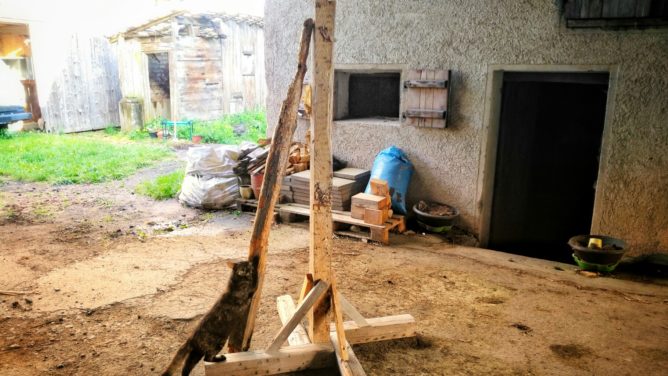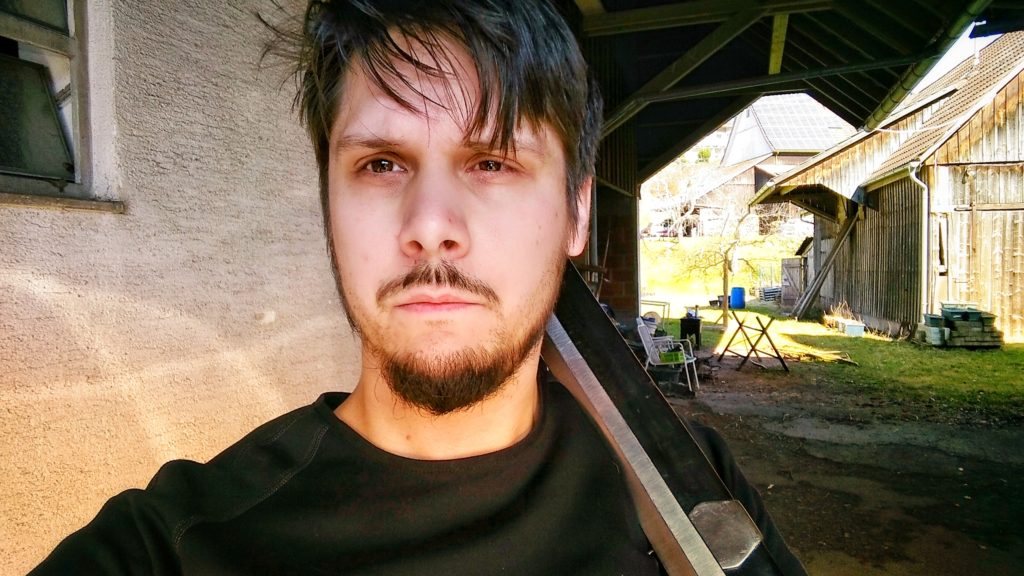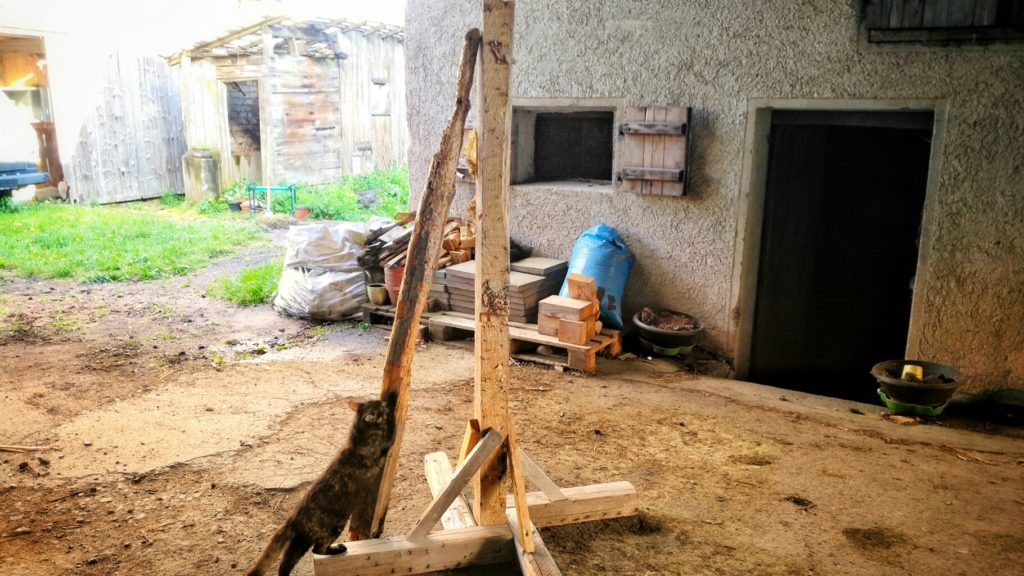Did some #pell training today. Nothing fancy. Mostly shaking the dust off the new pell.
Tag: pell
Refurbished My Pell

Some weeks ago I managed to kill my old #pell for good. I never expected it to hold that long at all when I built it back in 2016. To be fair I slacked off a lot over the last year but thanks to recent events forcing everyone to stay at home I stepped up my #training again.
Don’t train alone, it only embeds your errors.
Vesimir, The Witcher 3
Well, Vesimir is right, but that choice do we have? So I spent the late afternoon refurbishing my fallen #pell.

Luckily there was another beam, that was part of the kitchen wall some years ago (#hausbauquatsch), with the same dimensions. I could even re-use most of the old post.
Some of the old screws were broken and I had to persuade the leftovers with a crowbar (I probably learned this in Half-Life ;))

And that’s it this time. I never came back to adding any sort of dampening mats. Some use carpet or rope. I’ve even seen tires used for this. Somehow I became very fond of flying splinters all over the place though. It’s a very satisfying feeling and I even made a video about this some years ago.
Pell down
Diet time again
Hard to believe that this was just one year ago. Slacked off over the year and I’m back to zero 😭 Time to get into shape 💪
Spring
First pell training this year. I really slacked off. Man.. my arms are hurting now. Still great to train outside again ?

Slow Motion Pell Training (strong)
This video is about my heavy pell training.
I made a video about my usual pell training before so this is some sort of additional follow up.
When I started with pell training I trained stepping, distance, timing and other techniques that usually don’t involve strength. Or force, to be precise.
I knew that my swords could deal with a real beating. Some are in use for about 8 years by now. They survived lots of abusive tests, like throwing, and may not be in best shape any more.
So to get my muscles and joints used to stress I started to really beat up the pell. This was not about technics but to get used to the feedback recieved from real strikes.
I can’t apply the same force during sparring. Unlike a Federschwert the blunt doesn’t give much way and the risk is just not worth it.
But see for yourself how fast the pell gets gnawed off and enjoy the flying splinters in slow motion. Please note that I stood way to close to the pell to keep the camera as close as possible.
Again this is not a tutorial. I simply show what can be done.
- Introduction “On The Pell“
- How I built my pell
On The Pell
Against a wooden stake. This was made to show you various way what you can train on your own with just a pell when there’s no partner around. Just be aware to train according to your weapon. Not every waster can deal with intense impact.
This was spontaneous recorded when I went for a training session in the afternoon while the weather was nice and sunny. We got cosy 5°C today.
I’m sorry for the terrible audio. This footage is recorded with a tablet and the micro just doesn’t cut it. Also I’m training behind the barn and there’s a frequented road next to it.
This was made to show you various ways how you can train on your own with just a pell when there’s no partner around. Just be aware to train according to your weapon. Not every waster can deal with intense impact. My blunt one is doing the job since 2012 and didn’t even start to rattle on the guard.
Yet.
Read how I built my pell on my blog: https://duke.famkos.net/2016/10/23/building-a-pell/
Building A Pell
One of the simplest training tools for practicing strikes in Renaissance martial arts was the pell. The pell was an ancient training device for practicing swordplay and training soldiers in arms. It typically served as a practice target for striking with a shield and a wooden sword. A pell is something like the Medieval equivalent of a boxer’s punching bag. It consists of an ordinary wooden post or tree trunk planted firmly in the ground. A pell might be man-height and roughly six to twelve inches in diameter.J. Clements, On The Pell
This article got me started with pell works. While a pell does not replace a proper sparring partner some techniques can be trained on a pell. More on this topic can be read on Essential Training: The Pell by Stewart Feil.
Continue reading




